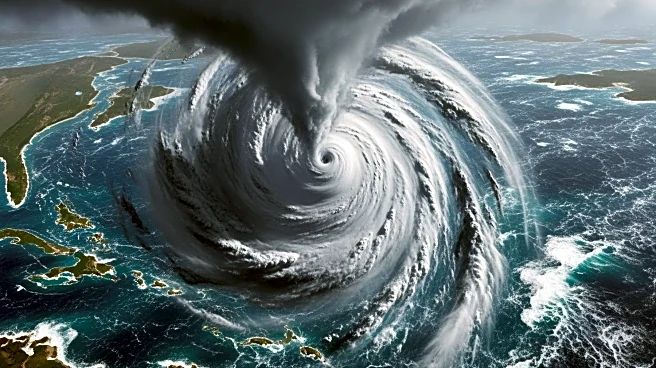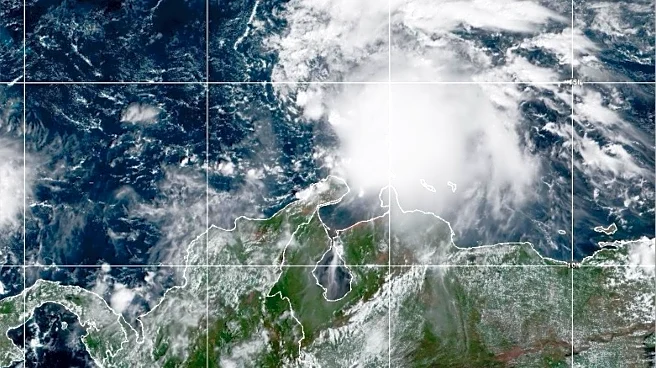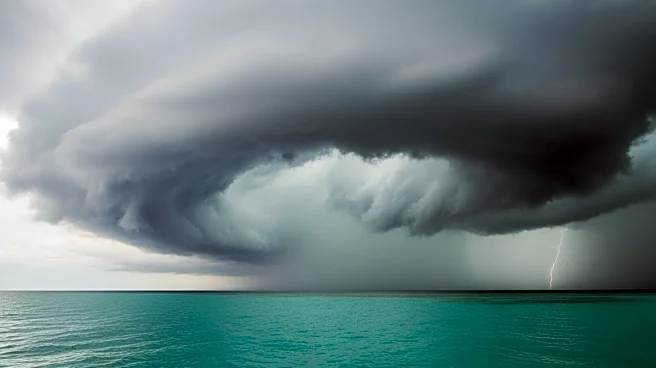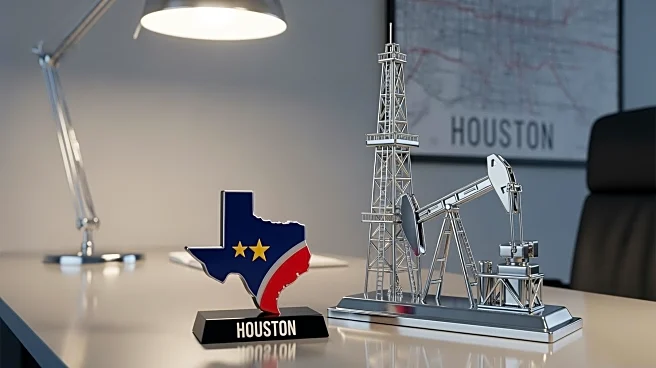What's Happening?
Tropical Storm Melissa is currently moving at an exceptionally slow pace in the Caribbean, covering as little as 2 miles per hour. This slow movement is a growing trend among Atlantic storms, which are
increasingly taking longer to move across regions, leading to prolonged periods of heavy rainfall. Meteorologists have noted that the slow pace of storms like Melissa can result in significant flooding, especially in areas with mountainous terrain such as Jamaica and Hispaniola. The slow movement is attributed to weak upper-level winds and the absence of other weather systems that typically influence storm speed and direction. The Caribbean Sea's unusually warm waters are also contributing to the potential intensification of Melissa into a major hurricane.
Why It's Important?
The trend of slower-moving tropical storms and hurricanes poses a significant risk of increased flooding and storm surge, particularly in coastal and island regions. This change in storm behavior is linked to the potential for more severe weather events, similar to Hurricane Harvey in 2017, which caused record-breaking rainfall in Texas. The implications for U.S. coastal areas are substantial, as slower storms can lead to extended periods of heavy rain and increased damage. While some research suggests a connection between this trend and global warming, the scientific community has not reached a consensus. Regardless, the increased rainfall associated with these storms is a concern for disaster preparedness and response strategies.
What's Next?
As Tropical Storm Melissa continues its slow progression, it is expected to bring heavy rainfall and potential flooding to Jamaica and Hispaniola. Meteorologists will be closely monitoring the storm's development and any potential intensification into a hurricane. The ongoing research into the causes of slower storm movement will likely continue, with a focus on understanding the role of climate change and other environmental factors. Emergency management agencies in affected regions will need to prepare for the possibility of prolonged storm impacts and coordinate response efforts to mitigate damage.
Beyond the Headlines
The trend of slower-moving storms raises questions about the long-term impacts of climate change on weather patterns. If these trends continue, there could be significant implications for infrastructure planning, insurance industries, and public policy related to climate adaptation. The potential for more frequent and severe flooding events may necessitate changes in building codes, urban planning, and emergency management practices to better protect vulnerable communities.












